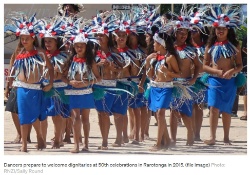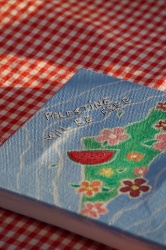Ukraine: UN And Partners Launch Winter Response Plan Amid Escalating Hostilities
17 July 2025
Amidst escalating hostilities and continued strikes on critical infrastructure, Ukraine is once again bracing for another harsh winter.
As the cold season brings heightened risks, especially for people near the frontline, displaced persons living in collective sites, and other vulnerable populations, the Winter Response Plan aims to deliver essential multisectoral humanitarian assistance to over 1.7 million people from October through March.
Serving as a tool for advocacy, resource mobilisation and coordination with Government authorities, the plan caters to the most vulnerable groups, including older people, persons with disabilities, and children.
Life-saving assistance
“As temperatures drop, millions across Ukraine will struggle to keep warm -especially in communities near the front line and among vulnerable displaced people,” said Mathias Schmale, the UN Humanitarian Coordinator for Ukraine.
Humanitarian organizations will help insulate and repair damaged homes, provide heaters, fuel, blankets, and warm clothing, prepare shelters for extreme cold, deliver cash for heating and utilities, and coordinate services in high-risk areas.
Additional strain
“Every winter puts additional strain on people already worn down by years of war,” Mr. Schmale said.
Areas most affected by cold in the winter are predominantly concentrated in northern and eastern Ukraine along the frontline.
People in these areas are exposed to harsh winter conditions, compounded by heightened vulnerability, and severely damaged infrastructure resulting from ongoing conflict and persistent airstrikes.
Displaced people residing in collective sites are also among the most vulnerable during winter, as recent monitoring of such sites indicates that nearly 60 per cent of these sites continue to face winter-related gaps.


 Asia New Zealand Foundation: ASEAN Young Business Leaders To Meet In Viet Nam, Marking 50 Years Of ASEAN-New Zealand Relations
Asia New Zealand Foundation: ASEAN Young Business Leaders To Meet In Viet Nam, Marking 50 Years Of ASEAN-New Zealand Relations Asian Human Rights Commission: Nepal | Joint Submission To The UN Universal Periodic Review - 51st Session Of The UPR Working Group
Asian Human Rights Commission: Nepal | Joint Submission To The UN Universal Periodic Review - 51st Session Of The UPR Working Group Caleb Fotheringham, RNZ Pacific: Cook Islands' 60th Anniversary - 'Who New Zealand Sends, Sends A Message'
Caleb Fotheringham, RNZ Pacific: Cook Islands' 60th Anniversary - 'Who New Zealand Sends, Sends A Message' Consumer Council of Fiji: Anti-Scam Taskforce Alerts Public To TikTok Based Investment Scheme
Consumer Council of Fiji: Anti-Scam Taskforce Alerts Public To TikTok Based Investment Scheme Vanuatu Climate Justice Program: Vanuatu Statement Ahead Of Landmark International Court Of Justice Advisory Opinion On Climate Change
Vanuatu Climate Justice Program: Vanuatu Statement Ahead Of Landmark International Court Of Justice Advisory Opinion On Climate Change Palestine Solidarity Network Aotearoa: Government Told NZ Should Not Follow Australia’s Lead To Criminalise Support For Palestine
Palestine Solidarity Network Aotearoa: Government Told NZ Should Not Follow Australia’s Lead To Criminalise Support For Palestine